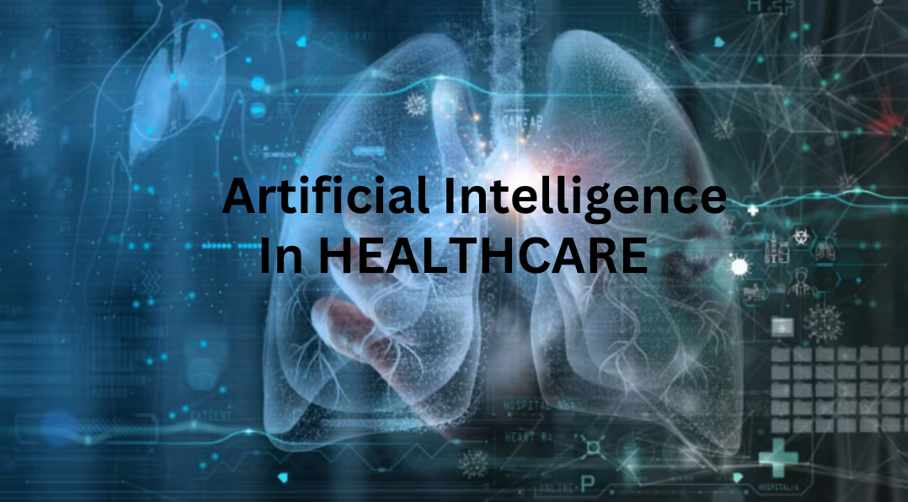Artificial Intelligence (AI) in Healthcare and Antibiotic Resistance
AI stands as a revolutionary force in scientific and engineering domains, unraveling the complexities of intelligent behavior. In healthcare, it becomes a crucial ally, transforming clinical diagnosis and prognosis with unparalleled efficacy. The global challenge of Antimicrobial Resistance (AMR) looms large, necessitating vigilant measures against antibiotic misuse. The rise in AMR poses a dual threat, fostering drug resistance and escalating the specter of super-resistant bacteria.
To counteract this rise, implementing an institutional antibiotic stewardship program becomes imperative. Such a program monitors, controls, and generates antibiograms, ensuring judicious antibiotic use. AI, with its boundless applications in healthcare, emerges as a beacon of hope. It accelerates the quest for new antimicrobial drugs, heightens diagnostic and treatment precision, and concurrently slashes costs. While AI doesn’t replace the doctor’s expertise, it acts as an invaluable tool, revolutionizing the battle against antibiotic resistance in infectious diseases.

Challenges Posed by Antibiotic Resistance: A Global Perspective
Excessive antibiotic use in healthcare has led to drug resistance, heightening the risk of super-resistant bacteria. Pakistan faces a high rate of Antimicrobial Resistance (AMR) with limited expertise, raising concerns. Alexander Fleming’s 1928 discovery of penicillin revolutionized medicine, saving countless lives. However, rampant antibiotic use fuels drug resistance, posing a threat of super-resistant bacteria emergence. AMR is a looming crisis, expected to cause 10 million deaths annually by 2050, with an economic impact nearing USD 100 billion. Urgent measures, including new regulations and renewed research efforts, are crucial to address this escalating epidemic.
Global Efforts and Challenges in Combatting AMR
With the recent surge in Antimicrobial Resistance (AMR), urgent global relief is imperative. The United States Food and Drug Administration proposes vital regulations on the types, quantities, and frequencies of appropriate antibiotic use. In 2006, the European Union took a bold step by completely prohibiting antibiotic use in cattle feed. Japanese and Chinese policymakers adopt more compelling proposals, with China unveiling the National Action Plan to Contain Antimicrobial Resistance (NAPACAR) in 2016. Despite heightened AMR awareness, the situation worsens, emphasizing the ongoing need for innovative solutions like antimicrobial peptides (AMPs), antibiotic combinations, and robust monitoring systems.
Understanding Antibiotic Resistance and its Impact
Antibiotics, crucial for preventing and treating bacterial and fungal infections in animals, including humans, face a challenge known as antibiotic resistance. This occurs when bacteria modify their genetic makeup in response to antibiotic use, leading to the emergence of antibiotic-resistant bacteria. These resistant strains pose a significant threat, causing more challenging infections in higher-order animals. Such infections result in prolonged hospital stays, elevated medical costs, and increased mortality rates compared to nonresistant bacterial infections. Addressing antibiotic resistance is pivotal to mitigating these adverse effects.

Shift in Antibiotic Consumption and Urgency of Behavioral Change
Recent studies reveal widespread resistance in infections to commonly used medications, emphasizing gaps in surveillance and systematic data collection. Urgent actions are needed to formalize surveillance practices and address Antimicrobial Resistance (AMR). A global shift in antibiotic consumption is imperative. Public behavior must evolve to support medical endeavors in discovering new antibiotics. This shift includes measures like immunization, handwashing, and maintaining excellent food hygiene to curb infectious disease transmission. Embracing these changes is essential to combat the growing threat of antibiotic resistance.

The Quest for New Antibiotics and Overcoming Resistance
The rise of antibiotic-resistant microorganisms in hospitals and the environment underscores the urgent need for new antibiotics. However, progress in this area has been slow. Traditionally, antibiotics have been derived from a limited number of molecular structures, extended through synthetic modifications. With the surge in multidrug resistance among recent pathogens, identifying novel molecular structures is now a top priority. Emerging techniques, including exploring untapped microbial sources, implementing screens to avoid repetitive structures, and repurposing synthetic molecular libraries, offer promising avenues for antibiotic discovery and development.
Harnessing High-Throughput Gene Sequencing for Insights
The advent of high-throughput gene sequencing empowers researchers with a formidable tool for profiling complete DNA, encompassing Antibiotic Resistance Genes (ARGs) in various environmental sources. Leveraging metagenomics techniques, ARGs have been unveiled in diverse samples—ranging from soil and cattle dung to wastewater treatment plants and water. This advanced approach offers insights into the prevalence of ARGs in potentially contaminated habitats, fostering a comprehensive understanding of antibiotic resistance in environmental settings.
Artificial Intelligence in the Fight Against Antibiotic Resistance
In computer science, AI plays a pivotal role in advancing human intelligence stimulation and research. It drives processes like speech recognition, visual perception, natural language processing, and data-informed decision-making. The growth of AI systems hinges on metadata from health records and advancements in processing performance. Complex mathematical algorithms, including neural networks (NN) and machine/deep learning, are intricately connected to these aspects, driving breakthroughs in computer performance. The evolution of deep neural network designs, marked by increased sophistication, underscores AI’s transformative impact on human intelligence simulation systems.

Machine Learning Dynamics in Healthcare
Machine Learning (ML), a subset of Artificial Intelligence, undergoes dynamic changes in results with large data capacities, mirroring human expertise and brain functionality. This characteristic renders it independent of human specialties. Neural Networks (NNs) are numerical models based on organic neural networks, forming interconnected data models that discern fundamental dataset connections. Deep Neural Networks (DNNs), with multiple layers, dynamically improve as dataset quantity increases, adapting to shifting information sources.
In healthcare, particularly with the surge in clinical data, AI assumes a progressive role in supporting clinical dynamics. Despite this, many specialists remain unaware of AI’s potential, relying on personal experience and therapy guidelines. This review underscores AI’s possible contribution to combating Antimicrobial Resistance (AMR), focusing on pediatric patients. The emphasis is on AI utilization for pediatric infections in developed countries.
AI’s Role in Early Detection and Diagnosis of Pediatric Infections
AI emerges as a vital player in early detection of infectious diseases, distinguishing between infectious and noninfectious conditions, and providing precise therapy. Creating antibiograms and personalized Machine Learning (ML)-based AMR prediction models proves effective in identifying high-risk infectious bugs and their susceptibility patterns. Studies showcase AI’s potential in predicting patient outcomes and optimizing antibiotic use in pediatric cases. These advancements promise a transformative role in combating antibiotic resistance, particularly in pediatric patients.
Challenges and Opportunities in the ICU with AI
Artificial intelligence plays a pivotal role in Intensive Care Units (ICUs), particularly in emergency scenarios. Beyond administrative functions, nonadministrative AI methods analyze vast electronic patient data, generating meaningful insights into individual profiles and predicting significant patient outcomes. Administered AI algorithms, with their proficiency in automated pattern recognition, find applications in radiology, pathology, and histopathology. Across medical domains, AI is extensively employed, especially in surgery, cardiology, and oncology, facilitating tasks like recognizing cardiac issues, categorizing cancer types, and assessing development stages.
Strategies for Overcoming Antibiotic Resistance: The AI Perspective
Research endeavors highlight innovative strategies to overcome antibiotic resistance, combining antibiotic susceptibility testing tools with machine learning. AI technologies, such as flow cytometer screening and assisted machine learning, significantly improve the speed and accuracy of testing methods. The application of AI in the development of new antimicrobial agents and the optimization of treatment approaches showcases its potential in combating antibiotic resistance. Strategies like support training-based techniques demonstrate AI’s capability to enhance therapeutic outcomes and reduce mortality in critical conditions like sepsis. AI presents opportunities for improved diagnosis, treatment, and management of antimicrobial resistance, offering hope in the relentless battle against super-resistant bacteria.
Frameworks for AI Implementation in Healthcare
To navigate the challenges posed by limited Healthcare resources and the overwhelming volume of information, AI-based frameworks come to the forefront. Automated decision support systems powered by AI assist clinicians in monitoring antimicrobial administration, identifying incorrect prescriptions, and preventing negative outcomes. AI frameworks, such as COMPOSER, employ machine learning to predict sepsis risk factors, offering a more refined and clinically relevant approach to antibiotic management.
In conclusion, the intersection of AI and Healthcare, especially in the context of combating antibiotic resistance, holds immense promise. As AI continues to evolve, its applications in early detection, diagnosis, treatment optimization, and management of infectious diseases, particularly in pediatric cases, will be transformative. The dynamic nature of machine learning, coupled with advanced AI frameworks, opens new avenues for precision medicine and effective antimicrobial stewardship. The ongoing collaboration between AI and healthcare professionals is essential to harness the full potential of these technologies in the relentless pursuit of overcoming antibiotic resistance.



